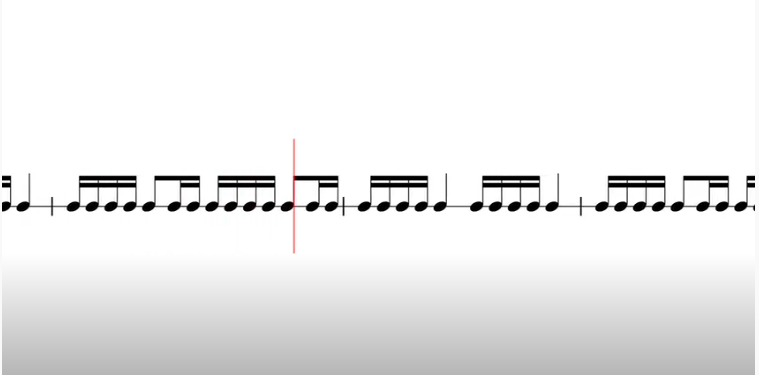When OrchLab visited Arnold House in March 2018, we used a piece of music by Russian composer Dimitri Shostakovich (his 7th Symphony, known as “Leningrad”) as our inspiration to create our own music. The Leningrad Symphony has four movements (sections). In the first movement, there is a very long section featuring a marching drum rhythm. In Shostakovich’s piece, this rhythm is repeated round and round, with the music building on top of it in layers, until it gets incredibly loud and dramatic! We have shared the drum pattern with you here, to use in your own music-making. You can watch/listen to this below or follow this link.
Running the activity
- Watch or listen to the drum pattern in the video. What words would you use to describe the music? How does it make you feel?
- The rhythmic pattern repeats again and again – can you tap, speak or otherwise show where the strong beats are? (It may help to say 1 2 3 4).
Extension: We’ve shown on the video what the written musical notes look like. Can you tap along with the rhythm, following the red line on the screen? This is hard as it goes very fast! - Use a percussion instrument to play on the strong beats. You could play on 1 2 3 4 or just on 1. Can you keep up with the recording?
- Create a tune to go with this rhythm. You can hear Shostakovich’s tune by listening to the second video in the playlist, where it is played on a flute. Using this tune, can you think of words that might fit? Here are some words that the group at Arnold House created on our project:
We are a family, we are a family, we are a family, we’re going on a march now, we’re going on a march now, we’re going to march now.
You can watch a video of this below.
- Alternatively, you could start with words to go with the rhythm, and work out a tune afterwards. You could start with just a few words repeated and work out the best way to say them in time over the rhythm. Then add more words so you make a phrase. When you have a phrase, try singing it to a tune.
- In Shostakovich’s piece, he adds more and more layers to this rhythm. You could create more layers to your March piece. This could include:
- Add more percussion instruments playing on the beat, or as a “shimmer” throughout (shakers are good for this)
- Use an iPad using Garageband or Thumbjam to improvise melodies or chords over the rhythm. Shostakovich’s piece is in Eb Major, so if using these apps you could use that key if you are playing along with our videos. If you are just playing over the rhythm you can choose another key you like. Can you make your music the same each time? If you choose C major or A minor, you could also use tuned percussion (xylophones, bells, glockenspiels) to join in using only white notes.
- Can you keep adding new layers (played by different people/instruments) each time, so your piece gets bigger and bigger like Shostakovich’s?
- We have created a third video in our playlist with a few more layers of music, played by an oboe, violin and trombone over the snare drum rhythm, which you can play along to with your version of the piece.
Explore more
- Listen to Shostakovich’s version via the video below – the March is at 7.48
- Where are you marching to? What’s it like there?
Why not use your March music as a “chorus”, but invent story “episodes” in between, using spoken word with instruments. You could play your march, then stop the recording and invent a musical story episode, then play your march again.
- Many composers use this technique when creating long pieces of music. If “A” is your March, your piece could have this structure: “A B A” which is called ternary form, or if you have more than one episode between your Marches it could be: “A B A C A D A…” This is called rondo form.
